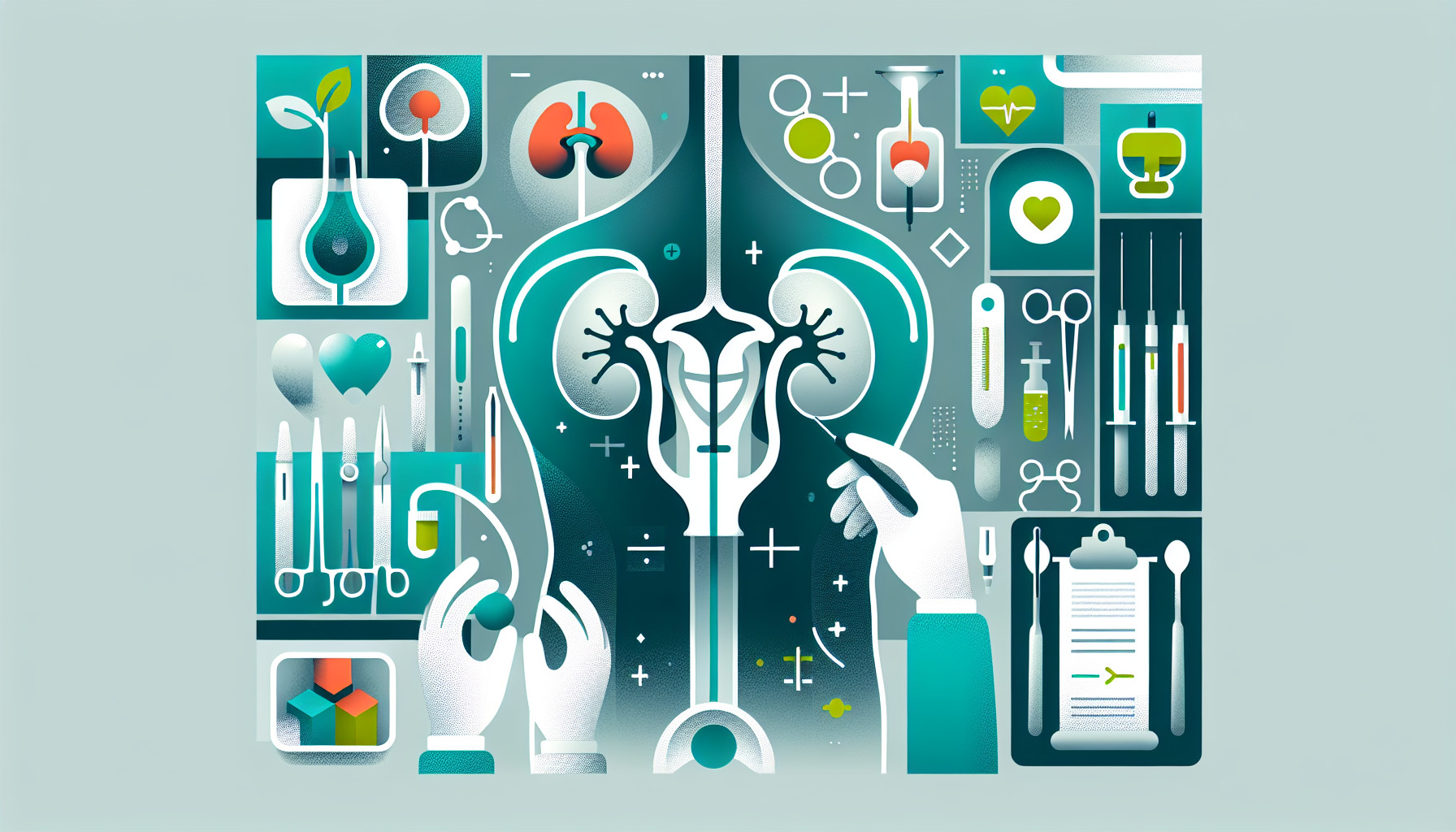Our Summary
This research paper is about a surgical procedure called percutaneous ureterostomy. The ureter is a tube that carries urine from the kidneys to the bladder, and sometimes it can get blocked. A percutaneous ureterostomy is a procedure where a surgeon creates a new pathway for the urine to flow directly from the kidney to the outside of the body, bypassing the blocked area. The paper discusses the experience of conducting such surgeries, likely discussing techniques, challenges, results, and potential improvements to the procedure.
FAQs
- What is a percutaneous ureterostomy?
- What can I expect from the surgery experience of a ureterostomy?
- Are there any risks associated with a percutaneous ureterostomy?
Doctor’s Tip
One helpful tip a doctor might tell a patient about ureterostomy is to keep the stoma clean and dry to prevent infection. It is important to regularly change the stoma bag and to carefully monitor for any signs of irritation or infection. Additionally, staying hydrated and maintaining a healthy diet can help support overall kidney function and urinary health after ureterostomy surgery.
Suitable For
Patients who may be recommended for a ureterostomy include those with:
- Obstruction or blockage in the ureter that cannot be treated with other methods
- Severe injury or damage to the ureter
- Cancerous tumors in the ureter
- Chronic urinary tract infections that do not respond to other treatments
- Congenital abnormalities of the urinary tract
- Patients who are not suitable candidates for other surgeries or procedures to address their condition.
Timeline
Before ureterostomy:
- Patient is diagnosed with a condition that requires a ureterostomy, such as a blockage in the urinary tract or a damaged ureter.
- Patient undergoes pre-operative consultations, tests, and evaluations to determine if ureterostomy is the best course of action.
- Patient is informed about the procedure, risks, benefits, and expected outcomes.
- Surgery date is scheduled and patient prepares by following pre-operative instructions, such as fasting and stopping certain medications.
During ureterostomy:
- Patient undergoes the ureterostomy procedure, which involves creating a new opening in the skin for the ureter to be rerouted.
- The surgeon places a tube or stent in the ureter to keep it open and ensure proper drainage.
- The patient is monitored in the recovery room and may stay in the hospital for a few days for observation.
After ureterostomy:
- Patient is discharged from the hospital and provided with aftercare instructions, including how to care for the stoma and drainage tube.
- Patient may experience pain, discomfort, and changes in urinary function as they adjust to the ureterostomy.
- Follow-up appointments are scheduled to monitor the healing process and address any concerns or complications.
- Patient may need to make lifestyle adjustments, such as changes in diet or activity level, to accommodate the ureterostomy.
- Over time, the patient learns to manage and care for the ureterostomy, with the goal of improving their quality of life and managing their condition effectively.
What to Ask Your Doctor
- What is a ureterostomy and why is it necessary for my condition?
- What are the risks and potential complications associated with a ureterostomy?
- How will the ureterostomy affect my daily life and activities?
- What is the expected recovery time after the ureterostomy procedure?
- Will I need to follow any specific dietary or lifestyle changes after the surgery?
- How often will I need to have follow-up appointments or check-ups after the ureterostomy?
- Are there any alternative treatment options to consider besides a ureterostomy?
- What can I expect in terms of pain management and discomfort after the surgery?
- How long will the ureterostomy be in place and will it need to be reversed in the future?
- Are there any specific warning signs or symptoms to watch out for after the procedure that may indicate a complication?
Reference
Authors: Hou L, Li H, Dong Q. Journal: Asian J Surg. 2023 Dec;46(12):5732-5733. doi: 10.1016/j.asjsur.2023.08.099. Epub 2023 Aug 30. PMID: 37652763
